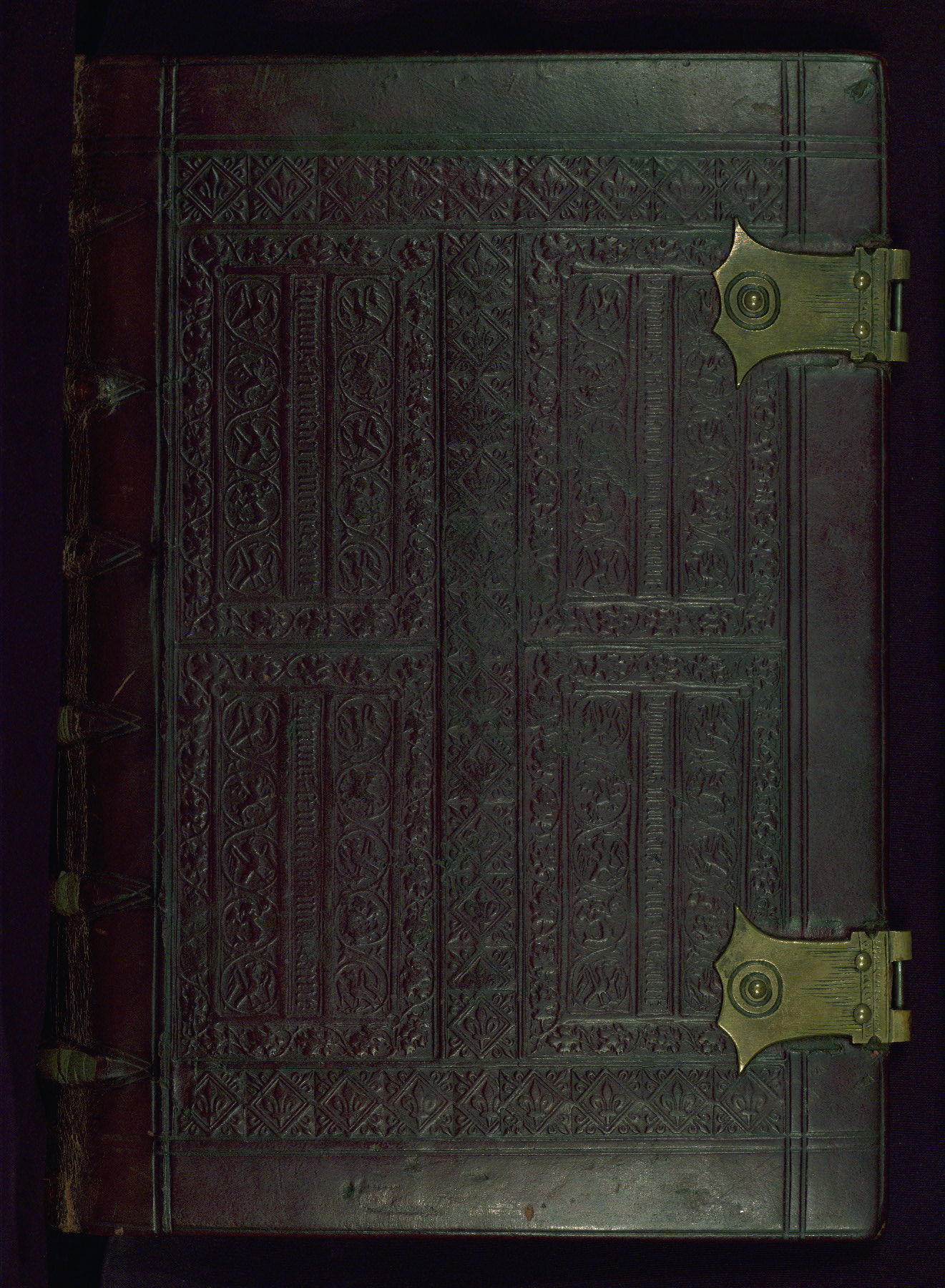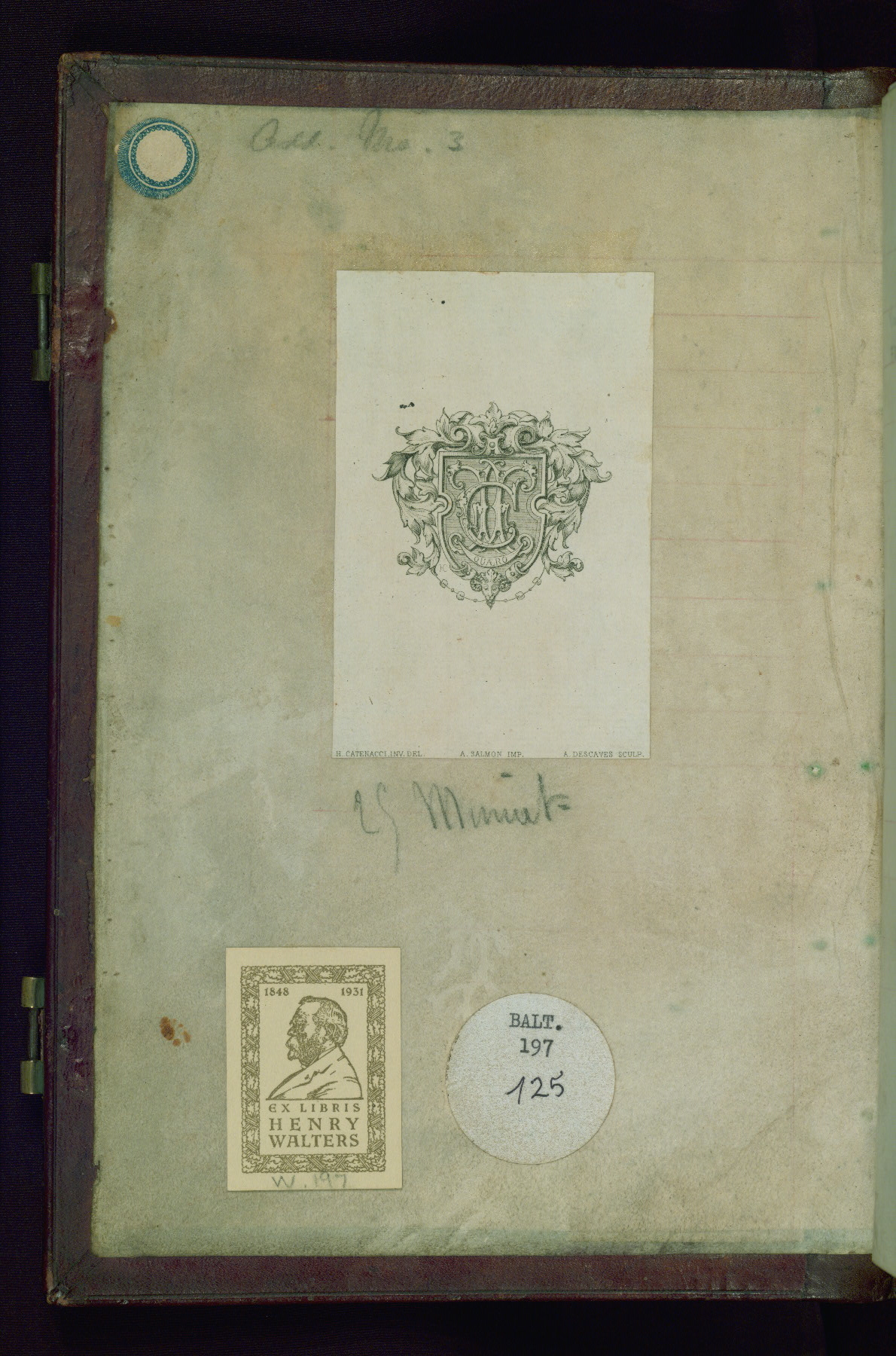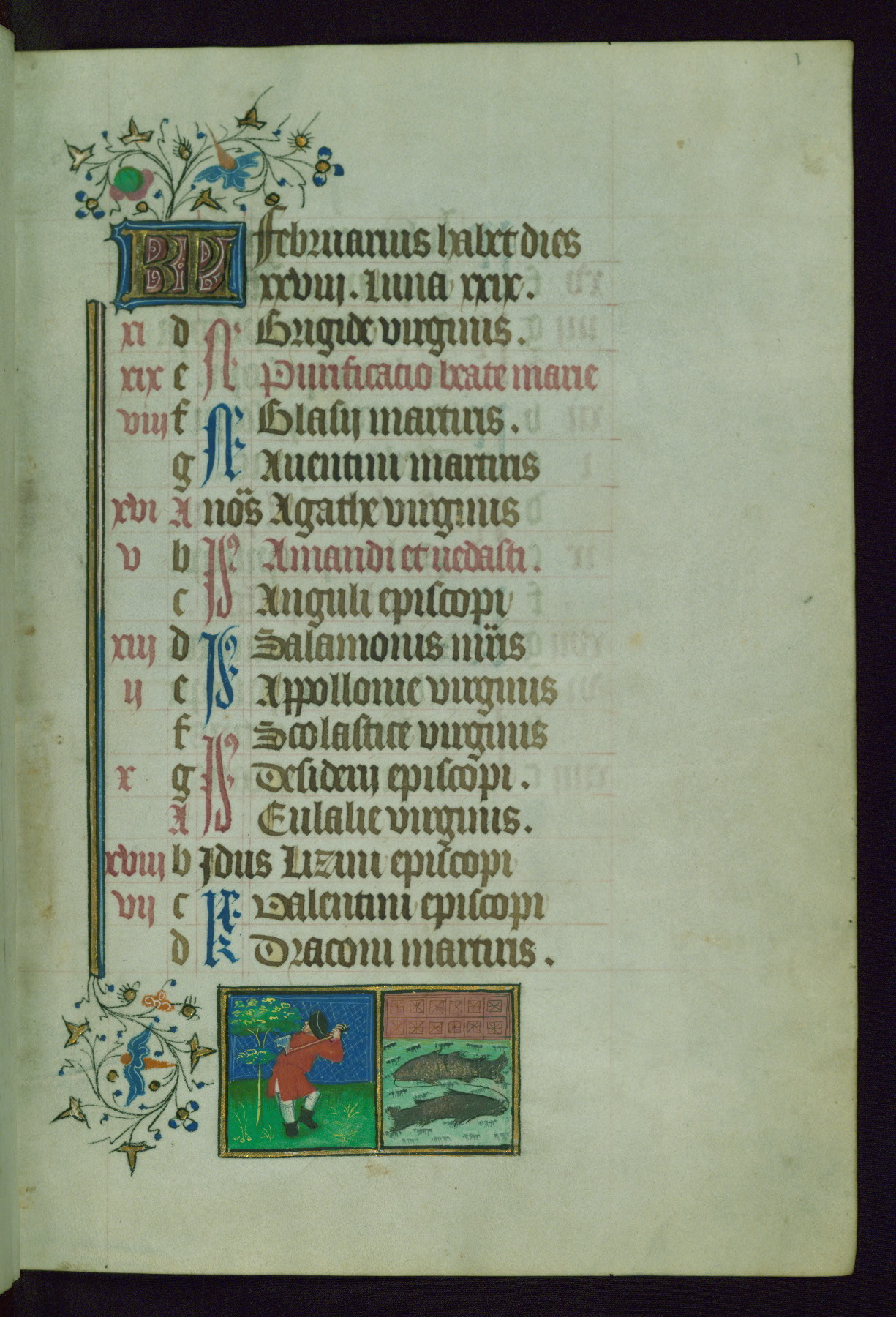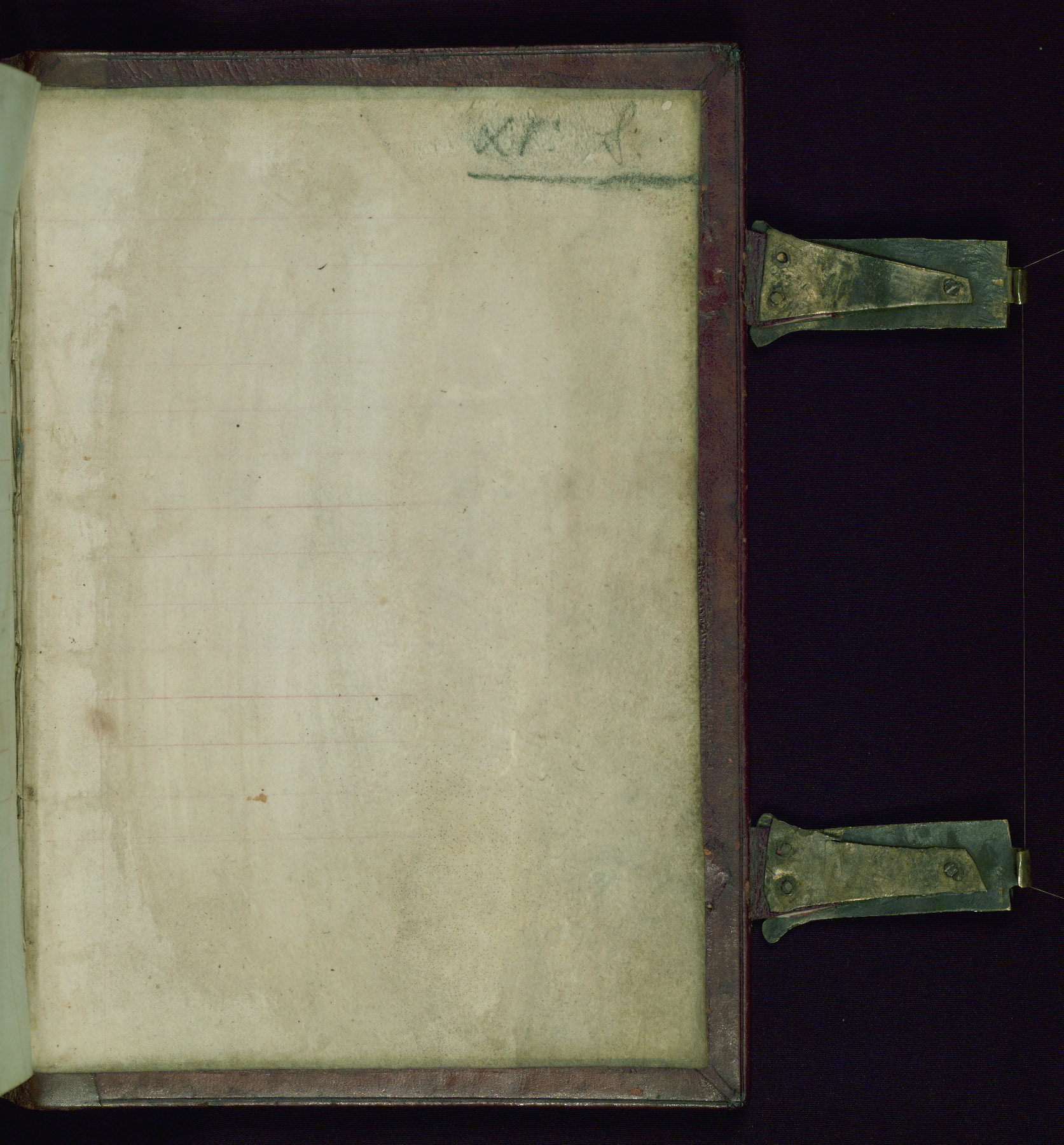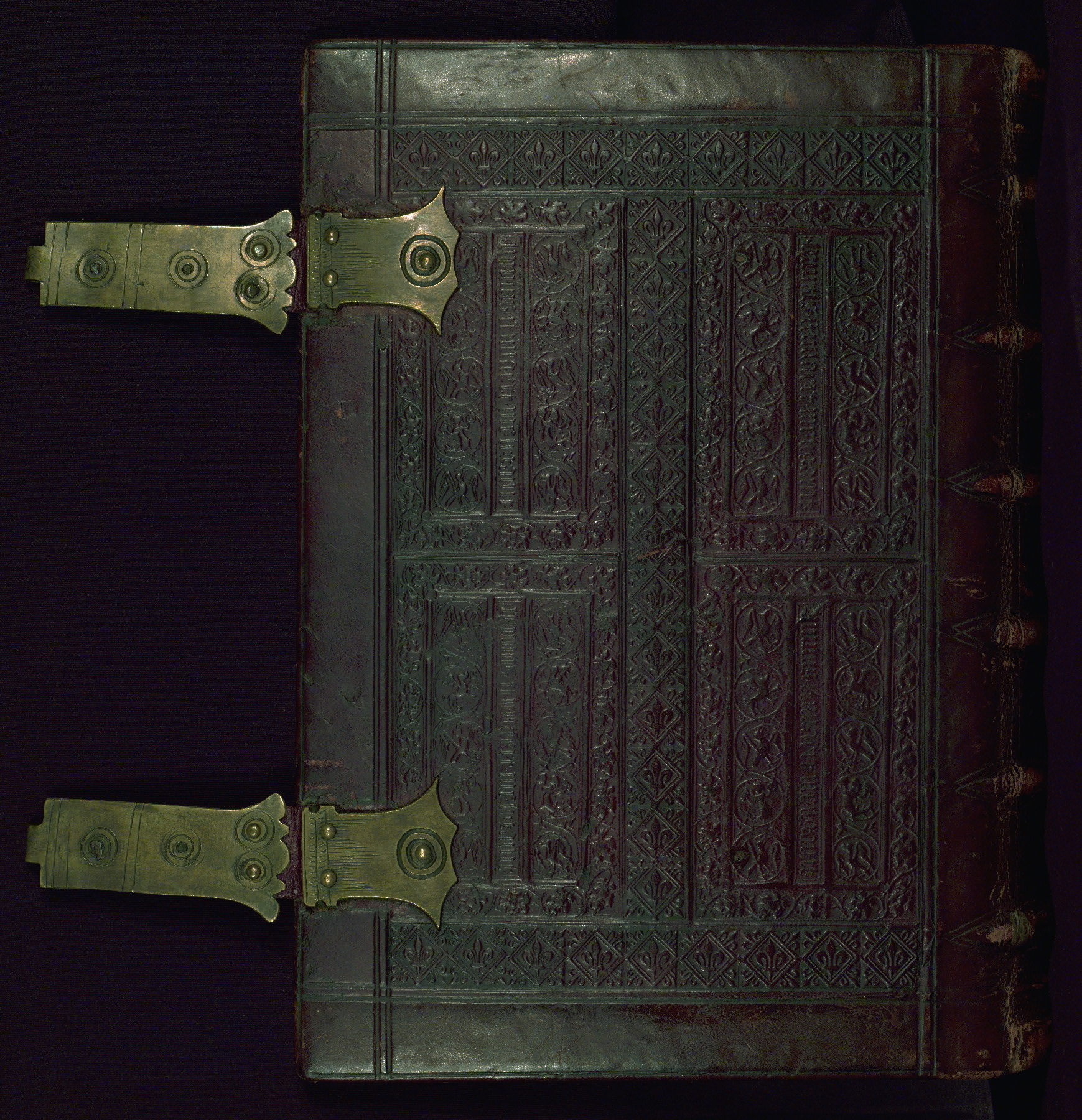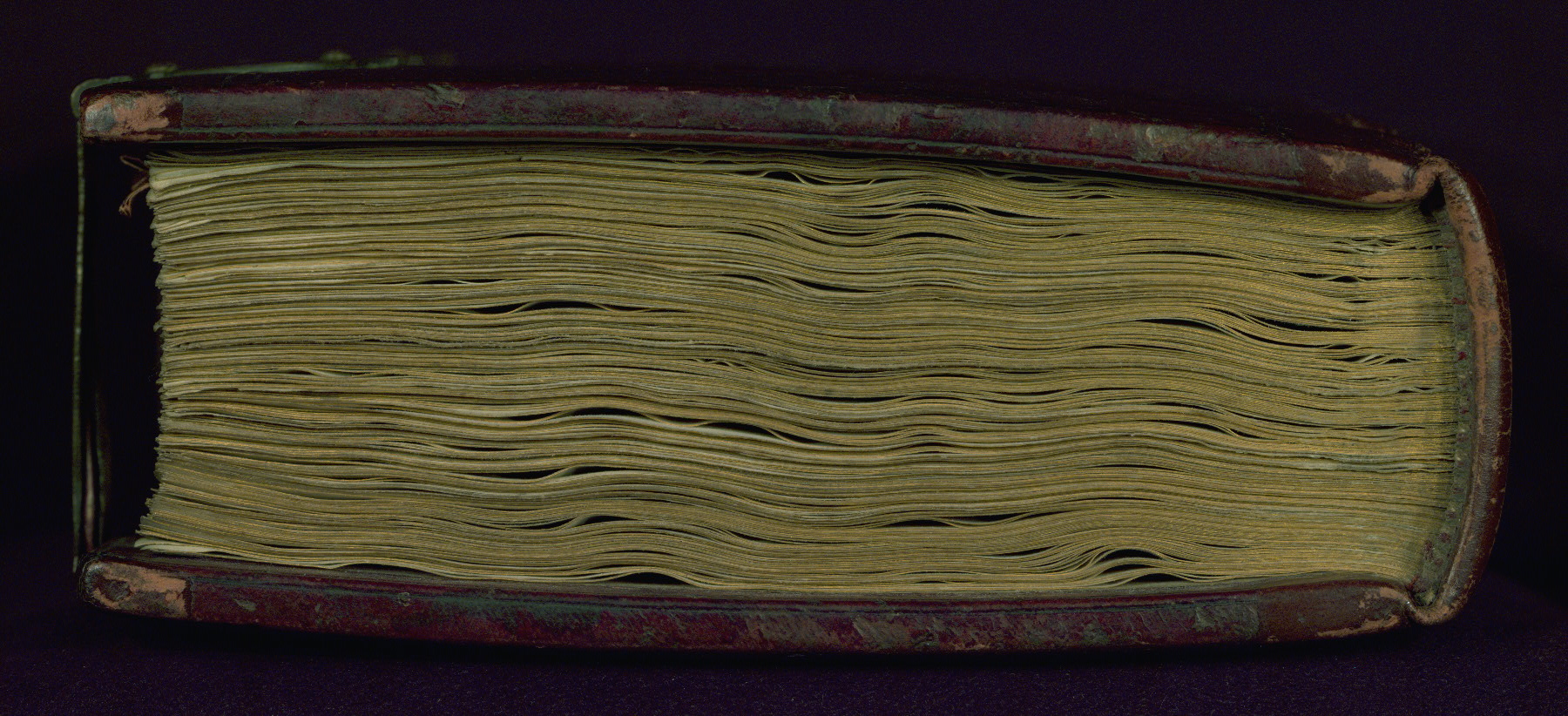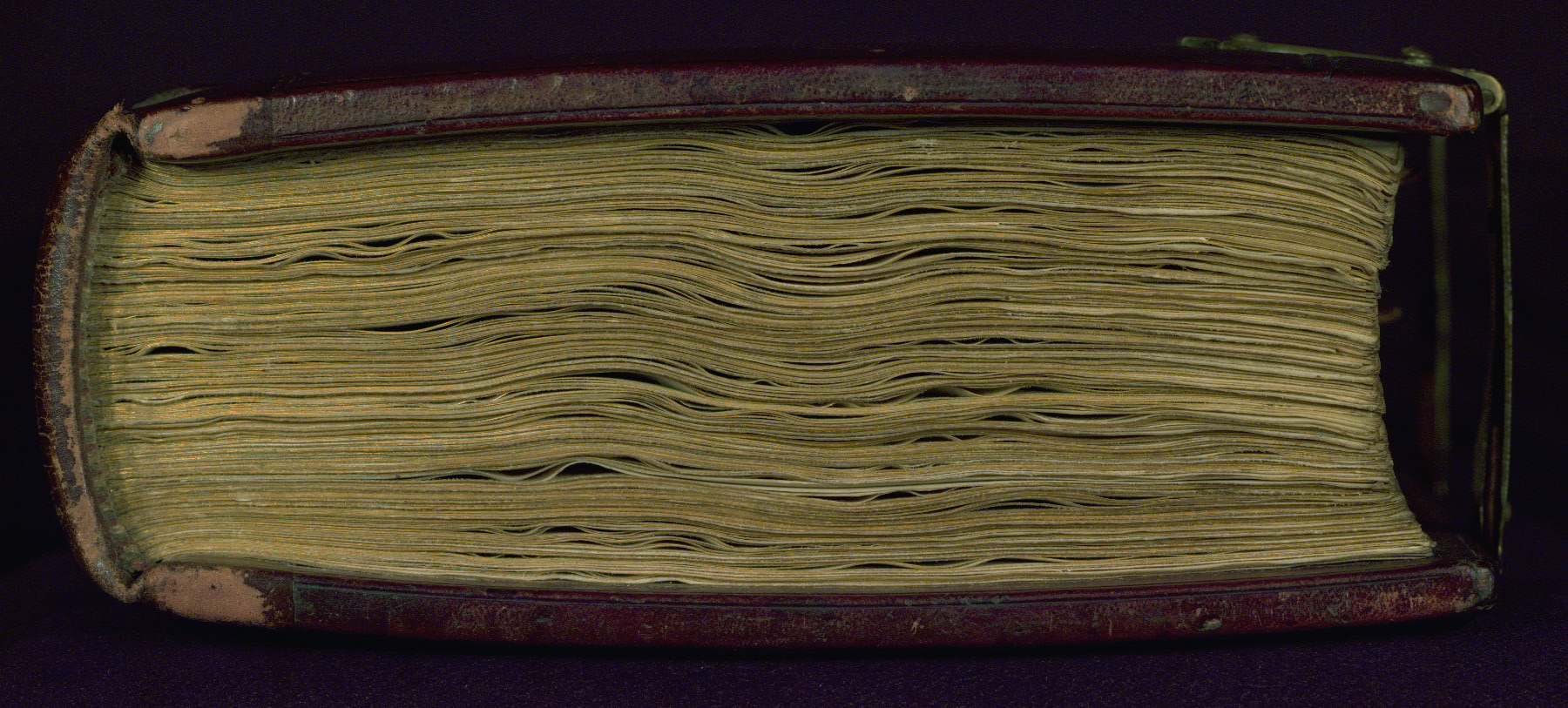Book of Hours
(Manuscripts and Rare Books, Medieval Europe )
This Book of Hours, ca. 1460, was completed for use of Rome and illuminated under the influence, if not the direct participation, of Willem Vrelant. There remain twenty-two extant marginal calendar illustrations, thirteen extant full-page miniatures (many of which are paired with opening suffrages, perhaps suggesting a certain amount of significance to the owner), and one historiated initial. The contemporary binding, signed Livinus Stuaert, is dated 1477 and is most likely of Bruges or Ghent origin. It is thought that the first owner was French due to the French headings throughout and prominent fleur-de-lis figurations decorating the binding. Further, the first owner was likely female, suggested by the ways in which the book was structured to facilitate legibility. This is evinced by the large size of the script and the lack of abbreviations. While much of the text is standard, there remains evidence of personal significance and preference. This is seen in the chosen illuminations for those sections that are most significant to the owner. Most illuminations are paired with the opening page of staple Hours; however, many are accompanied by individual suffrages, constituting a large portion of the beginning of the manuscript. Personal preference is also shown in those sections of text that stray from the standard. The devotional sequence of this manuscript is notable for its sheer length and diversity of prayers as well as its inclusion of a French prayer not of official liturgy (fols. 215r-219v). The first collection of three prayers is headed and written in French. The prayer is attributed to St. Augustine and is described to guarantee a transformation of tribulation into joy through Christ's mercy, but only if the suppliant recites the prayer for thirty consecutive days. While it is not uncommon for evidence of an owner's predilections to surface in a Book of Hours, the particularly divergent features of this book allow readers to glean an intimate view of the patron.
Provenance
Provenance (from the French provenir, 'to come from/forth') is the chronology of the ownership, custody, or location of a historical object. Learn more about provenance at the Walters.
J. Capron, Ypres, Brussels, April 6 1875 [1]. Acquired by Henry Walters, early 20th century; by bequest to Walters Art Museum, 1931.
[1] Inscription on fol. 62v and bookplate on front pastedown
Exhibitions
| 1993 | Travel in Medieval Manuscripts. The Walters Art Gallery, Baltimore. |
| 1992 | Royalty in Medieval Miniatures. The Walters Art Gallery, Baltimore. |
| 1988 | Time Sanctified: The Book of Hours in Medieval Art and Life. The Walters Art Gallery, Baltimore. |
| 1986 | The Four Seasons. The Walters Art Gallery, Baltimore. |
| 1982 | God's Minstrel: St. Francis of Assisi. The Walters Art Gallery, Baltimore. |
Conservation
| Date | Description | Narrative |
|---|---|---|
| 4/1/1975 | Treatment | stabilized |
| 7/21/2014 | Treatment | binding stabilized; examined for digitization; media consolidation; splits mended |
Geographies
Belgium, Bruges (Place of Origin)
Measurements
Folio H: 8 7/16 x W: 5 7/8 in. (21.5 x 15 cm)
Credit Line
Acquired by Henry Walters
Location in Museum
Not on view
Accession Number
In libraries, galleries, museums, and archives, an accession number is a unique identifier assigned to each object in the collection.
In libraries, galleries, museums, and archives, an accession number is a unique identifier assigned to each object in the collection.
W.197

